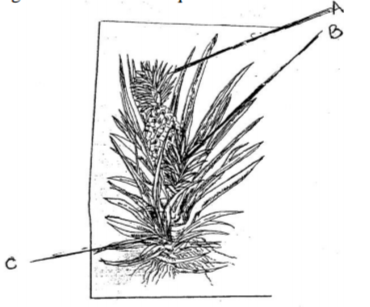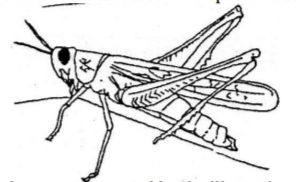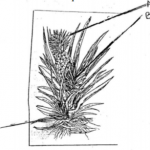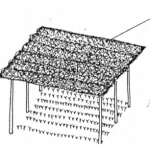KNEC KCSE Islamic Religious Education Paper 2 – 2014 Cross Country Mock
2014 Cross Country Mock
Agriculture Paper 1
SECTION A (30 Marks)
Answer all questions in this section.
State four methods of breaking seed dormancy in some crops before planting. (2mks)
2 marks
Name four types of materials required to construct gabions used in water and soil conservation.
2 marks
Give four reasons why maize should be harvested at milk state for making silage.
2 marks
State two symptoms of coffee-berry disease (CBD) on a coffee plant.
1 marks
Give three reasons for practicing minimum tillage.
1.5 marks
What is opportunity cost in agricultural production?
0.5 marks
List two ways in which pruning help to control diseases in tomatoes.
1 marks
Give four factors which determine the time for planting a crop.
2 marks
Give two reasons why it is recommended to top dress maize at the height of 30-45cm with nitrogenous fertilizers
1 marks
State two disadvantages of overstocking in pasture management
1 marks
Give four factors that influence the quantity of water used in the farm
2 marks
What is a fertilizer grade?
1.5 marks
State three ways in which overheating in silage could be controlled
1.5 marks
State two causes of land fragmentation in Kenya.
1 marks
State four effects of soil erosion in crop production.
2 marks
Give four reasons why chemical pest control measures should be used as a last resort in crop production.
2 marks
State two disadvantages of state ownership of land tenure.
1 marks
Give four reasons why planting of trees and shrubs should be avoided at certain sites.
2 marks
Give four examples of agro-forestry trees used as fodder crops.
2 marks
State four harmful effects of diseases to crops
2 marks
SECTION B (20 Marks)
Answer all questions in this section.
Study the following diagram and answer the questions that follow:
(a) Give the identity of the following parts (1 ½ mks)
A
B
C
(b) Give two ecological factors that influence the sweetness of the above fruit. (1mk)
(c) Which is the best part for propagation and why? (1mk)
3 marks
Study the experiment below on soils and answer the questions thereafter after understanding the procedure. The soil was crushed without breaking the particles and put through a series of sieves beginning with the largest mesh shaking vigorously. The soil that remained in every sieve was weighed and recorded.
(a) What was the aim of the experiment? (½ mk)
(b) Which soil was left on;
(i) 2.00mm sieve (½ mk)
(ii) 0.20mm sieve? (½ mk)
(iii) 0.002mm sieve (½ mk)
(c) Which soil passed through the 0.002mm sieve (½ mk)
(d) State four properties of clay soils (2mks)
4.5 marks
Explain the procedure followed in planting sleeved tree seedlings.
3 marks
(a) State five details you would include in marketing records (2 ½ mks)
(b) State two types of labour records (1mk)
3.5 marks
The illustration below illustrates a common pest in a cultivated crop.
(a) Identify the pest represented by the illustration (½ mk)
(b) State the method of feeding of the pest (1mk)
(c) Give the control measure of the pest (1mk)
2.5 marks
Describe the procedure of preparing hay.
2 marks
SECTION C (40 Marks)
Answer two questions in this section.
(a) Describe the effects of diseases on tomatoes in the field. (5mks)
(b) Describe the procedure of harvesting coffee (4mks)
(c) Explain the precautions observed during the harvesting of cotton (4mks)
(d) Explain the importance of organic matter in the soil (7mks)
20 marks
(a) State and explain five ways in which human factors influence agriculture (5mks)
(b) Describe the preparation of compost manure using indore method (pit method) (9mks)
(c) State and explain how soil loses soil fertility. (6mks)
20 marks
(a) Describe the production of maize for grain production under the following sub heading
(i) Four varieties common in Kenya (2mks)
(ii) Seedbed preparation (3mks)
(iii) Field practicals (5mks)
(b) State and explain five cultural methods used to control weeds (5mks)
(c) State and explain five plant characteristics that affect selectivity and effectiveness of herbicides.
(5mks)
20 marks







